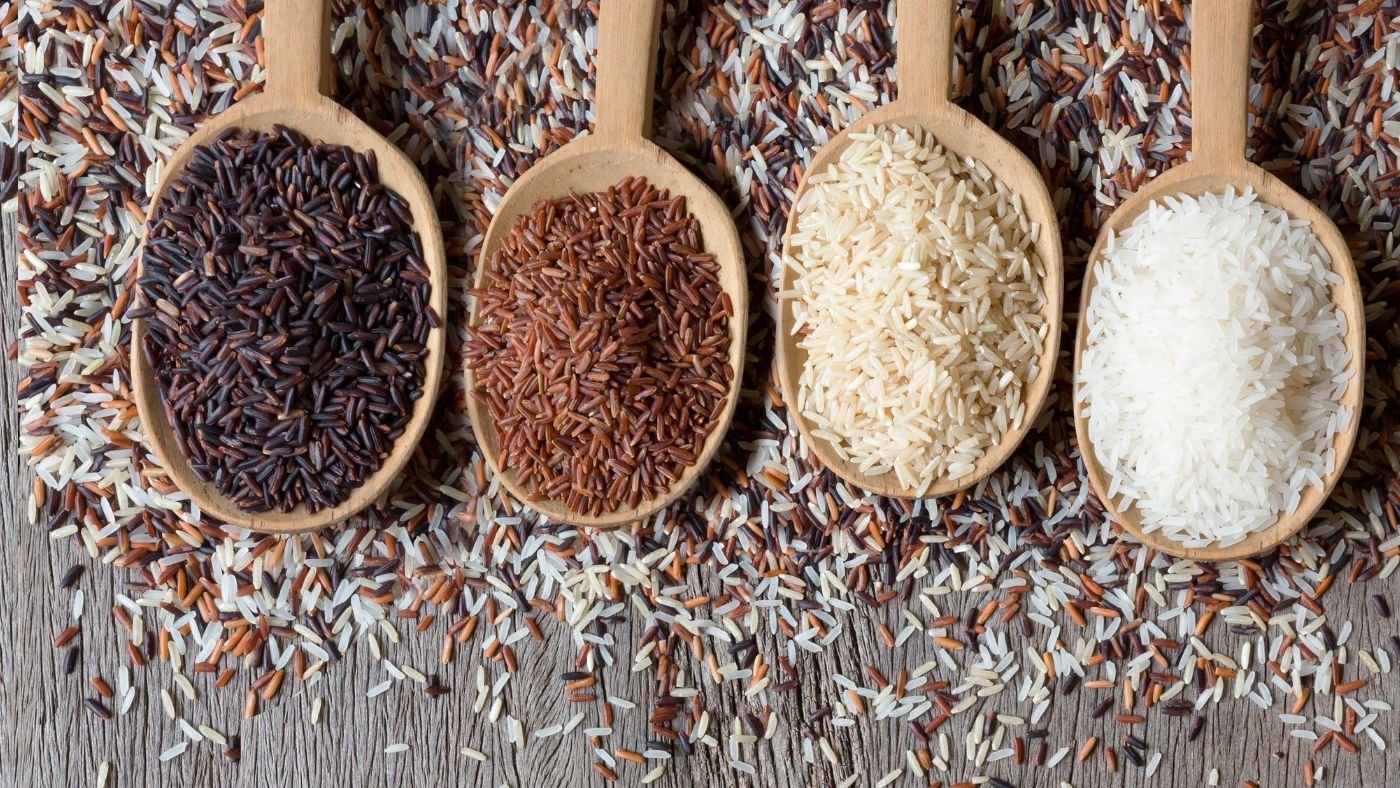A very popular product worldwide and one of the best foods of all time. This is the established opinion. But is rice a healthy choice?
What is rice?
Rice (oryza sativa) is the seed of a cereal grass. It is one of the most important dietary carbohydrates in the world, on which more than half of the world's population depends. Regularly cooked or steamed rice can also be ground into gluten-free flour. It is a key ingredient in many cuisines, including Indian, Chinese and Southeast Asian cuisines.
There are many types of rice, but they are broadly categorized by their shape (long or short grain) and color, white or brown.
In white rice, the fibrous outer bran of the grain is removed along with the nutrient-rich germ. As a result, they have a longer shelf life, are quickly prepared, but have a mild, neutral taste. Nutritionally, they are lower in fiber and protein than the whole grain equivalent.
Brown rice, on the other hand, contains both bran and germ, so it's packed with nutrients, fiber, and retains a nutty flavor, too.
Nutritional benefits of rice
A 100 g portion of white rice (cooked) provides:
- 131 kcal/560 KJ
- 2.8 g of protein
- 0.4 g of fat
- 31.1g of carbohydrates
- 0.5 g of fiber
A 100 g serving of brown rice (cooked) provides:
- 132Kcal/562KJ
- 3.6g of protein
- 0.9 g of fat
- 29.2 g of carbohydrates
- 1.5g of fiber
- 48mg magnesium
- 125mg of phosphorus
Despite the myths, white rice is basically not much worse than brown rice. They are low in fiber, fat and calories. They can be combined with high-fiber foods to increase the nutritional spectrum.
What are the main benefits of rice?
May help maintain an optimal weight
Brown rice contains fiber and protein, which are known to have a satiating effect on the body and contribute to a lower glycemic index (GI) than white rice.
This means that some of the carbohydrates supplied by brown rice are more stably converted into energy. For this reason, choosing brown rice over white rice helps lower blood glucose and fasting insulin levels.
All of these stabilize energy levels, prevent cravings, and can help with weight management.
The situation with white rice is less clear: some studies show weight gain, especially belly fat, while other studies show no link. However, eating large portions of white rice is thought to cause blood sugar spikes, which over time can increase the risk of metabolic syndrome, including weight gain.1
More about weight loss - Lose weight healthy. Three science-backed methods
White rice supports energy and restores glycogen levels after exercise
Athletes often choose white rice as an energy source, especially to replenish energy reserves after training. This is because refined carbohydrates, such as white rice, are a quick, readily available source of carbohydrates that are needed to replenish muscle glycogen after exercise.
White rice is easy to digest
White rice is easy to digest, low in fiber, and when properly cooked and served, is unlikely to cause an upset stomach.
It can be a beneficial food for those suffering from heartburn or nausea, as well as during flare-ups associated with conditions such as diverticulitis and Crohn's disease.
It is a gluten-free grain
Because rice is naturally gluten-free, it is a valuable choice for those with celiac disease.
Brown, whole grains are especially beneficial because they provide insoluble fiber that promotes digestive function and "fuels" the beneficial gut bacteria that are so important for health.
Eat rice with peas and beans, lean cuts of meat, fish and vegetables. This way you get balanced and nutritious meals.
Is rice safe for everyone?
Rice is an important dietary staple. There have been reports of rice being contaminated with arsenic. High levels of arsenic over a long period of time have been linked to an increased risk of heart disease and cancer. Arsenic accumulation tends to be highest in the bran portion of the grain, meaning that whole grain rice may contain higher levels of this heavy metal contaminant than white rice.
Given the lower body weight of children, exposure to arsenic poses a greater risk. This risk comes from limited dietary choices and the fact that many foods are made from rice.
For this reason, all children under the age of 5 should avoid rice milk made from cereal bran.
Some helpful tips from a chef can help reduce arsenic levels, such as washing rice before use and using plenty of water to cook rice.
Rice eaten in moderation as part of a varied and balanced diet should not be a problem for most people.
Good to know about rice
White rice is a staple food in many cultures around the world, but its reputation has been tarnished by conflicting scientific findings about its effects on human health.
Some studies suggest it may increase the risk of type 2 diabetes in Asian women, while other studies suggest it may lower blood sugar when rice is refrigerated for a day after cooking.
White rice contains some minerals, is low in calories, low in fat, and has nutritional benefits. Therefore, they are often chosen for various balanced diets.
It is worth considering eating rice with a high fiber meal.
White rice can be served with peas and beans or with lean cuts of meat, fish and vegetables to make balanced and nutritious meals.
It is important to rememberthat everyone's health is individual and there is no common recipe for everyone!
So, if you want to know what nutrients your body might be lacking right now, health professionals recommend a guide – "Your Day".
- In time, pay attention to the signals sent by your well-being
- Replenish the body with natural minerals, vitamins and nutrients necessary for health.
- Enjoy energy and good mood everyday!











